Gum Disease Treatment Richmond
Soothe Red & Swollen Gums
Your gums are often overlooked, but they are an important part of a healthy smile. After all, they hold the teeth in position. Although red, swollen, and bleeding gums may seem like a small irritation, it could mean that they are infected. If you do nothing about gum disease, it can escalate to the point where you lose your teeth! That’s why it’s important to seek gum disease treatment in Richmond, VA as soon as you can and keep your gums as healthy as possible.
Why Choose Brown, Reynolds, Snow, LeNoir Dentistry for Gum Disease Treatment?
- Caring, Skilled Dentists with Decades of Experience
- Customized Treatment for Each Patient
- Two Dental Offices in Richmond
What is Gum Disease?
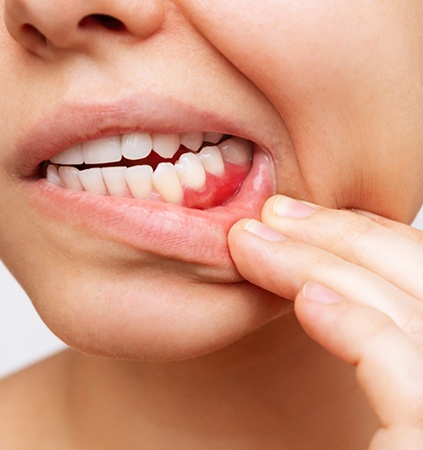
Gum disease is an infection that occurs in the soft oral tissues that support your teeth. As bacteria accumulate, it attacks the gums and causes inflammation, tenderness, and bleeding. What can begin as gingivitis (the earliest stage of gum disease) can quickly progress to advanced periodontitis, which includes gum pocket formations and eventually, bone and tooth loss.
Symptoms of Gum Disease
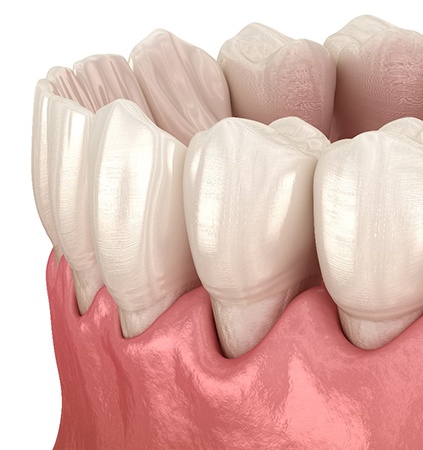
You may not know if you have gum disease if you are not looking for particular signs. Some of the most common symptoms associated with this oral health problem include:
- Swollen, bleeding gums
- Tenderness of soft oral tissues
- Bad breath
- Loose permanent teeth
- A change in your bite
- Gum recession (teeth that appear longer than before)
Periodontal Disease & Systemic Health
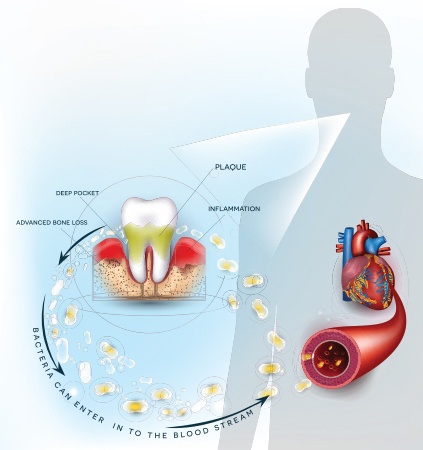
What many patients don’t know is that periodontal disease affects much more than the teeth and gums. The inflammation it causes can also contribute to various systemic conditions. While research is still ongoing, it is highly likely that the presence of periodontal disease can increase one’s risk of developing heart disease. Additionally, severe periodontal disease can elevate one’s blood sugar, which may lead to dangerous complications in diabetic patients. This is another important reason why our team urges patients to seek treatment as soon as possible.
How Do We Treat Gum Disease?
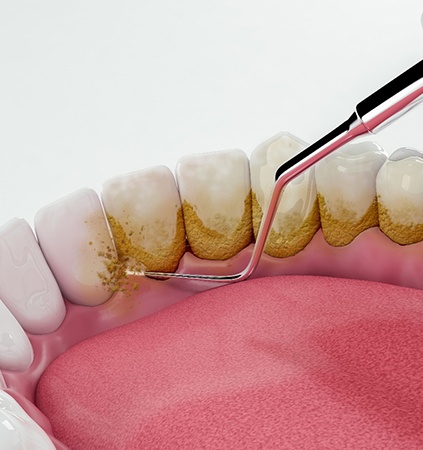
At Brown, Reynolds, Snow, LeNoir Dentistry, we use scaling and root planing to target bad bacteria within the gums. After a thorough examination, we will craft a treatment plan that encompasses how we plan to address the issue as well as what you can do to manage it in between appointments.
Scaling & Root Planing
Once gum disease has progressed to a certain point, a regular dental cleaning isn’t enough to clear out the bacteria. In this case, we go beneath the gum line, where plaque and bacteria have become trapped in deep pockets. This deep cleaning process is called scaling. Then, we make it easier for the gum tissue to reattach and harder for the infection to return by evening out the rough root surfaces, which is called root planing.
Scaling & Root Planing
Once gum disease has progressed to a certain point, regular dental cleaning isn’t enough to clear out the bacteria. In this case, we go beneath the gum line, where plaque and bacteria have become trapped in deep pockets. This deep cleaning process is called scaling. Then, we make it easier for the gum tissue to reattach and harder for the infection to return by evening out the rough root surfaces, which is called root planing. Read on to learn more about this method for treating periodontal disease.
Do I Need Scaling & Root Planing?

In many cases, scaling and root planing will mostly be recommended if a patient has a level of periodontal disease that is too far advanced. Some of the usual indications that you’ll need to undergo this procedure include:
- Bleeding from the gums while you’re brushing and/or flossing
- Receding gum line
- Noticeable plaque and tartar buildup
- Trouble with chewing or biting down
- Constant halitosis (bad breath) or a bad taste in the mouth
- Gradually shifting teeth
Should you notice any of the above symptoms, be sure to notify our team so that we can evaluate your gums and determine if it’s necessary to address your situation with scaling and root planing. The further along the infection has gotten, the higher the chance that you’ll need this treatment.
The Process of Scaling & Root Planing
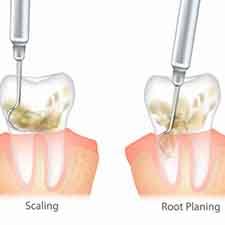
This method of gum disease treatment can typically be completed in two appointments. The first visit will be scaling, which involves our team using special dental tools to carefully extract any plaque and tartar from around your teeth and gums. We will also go beneath the gumline in the pockets where bacteria have settled.
During your next appointment, we’ll continue the treatment with root planing, which consists of smoothing out the roots of your teeth. This technique is beneficial because it makes it much easier for your gum tissue to attach to your pearly whites, and it makes it more challenging for bacteria to accumulate underneath your gumline. This can end up lowering your risk of future periodontal disease significantly.
Aftercare Tips for Scaling & Root Planing

It is quite normal for most patients to experience minor discomfort and/or tenderness for several days after their treatment. Your teeth might even feel sensitive and your gum tissue may have some mild bleeding or swelling. The good news is that this can be easily managed by simply brushing, flossing, and rinsing your mouth with non-alcoholic mouthwash. Our team will likely prescribe you an antibiotic or even a specialized mouthrinse to optimize your recovery while helping you take proactive measures to minimize infection. You can also take over-the-counter pain medications as instructed. In most cases, your gums should heal within one to two weeks. During your healing phase, be sure to avoid particularly hot, spicy, or sharp foods that could get trapped underneath the gumline.


